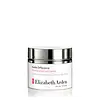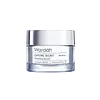What's inside
What's inside
 Key Ingredients
Key Ingredients

 Benefits
Benefits

 Concerns
Concerns

 Ingredients Side-by-side
Ingredients Side-by-side

Water
Skin ConditioningCyclopentasiloxane
EmollientGlycerin
HumectantCetyl Ricinoleate
EmollientCetearyl Methicone
Skin ConditioningGlyceryl Stearate
EmollientPEG-100 Stearate
Butylene Glycol
HumectantDimethicone
EmollientSqualene
EmollientHydroxyethyl Acrylate/Sodium Acryloyldimethyl Taurate Copolymer
Emulsion StabilisingAcrylates/C10-30 Alkyl Acrylate Crosspolymer
Emulsion StabilisingAscophyllum Nodosum Extract
Skin ConditioningAscorbyl Glucoside
AntioxidantAsparagopsis Armata Extract
Skin ProtectingC30-45 Alkyl Dimethicone
Skin ConditioningCarrageenan
Ceramide AP
Skin ConditioningCitric Acid
BufferingCyclohexasiloxane
EmollientDimethicone/Vinyl Dimethicone Crosspolymer
Skin ConditioningDisodium EDTA
Glycine Soja Seed Extract
Skin ConditioningHydrolyzed Hazelnut Protein
Skin ConditioningIsohexadecane
EmollientMelilotus Officinalis Extract
AstringentOlea Europaea Fruit Extract
BleachingOligopeptide-4
Skin ConditioningOligopeptide-5
Skin ConditioningPanthenol
Skin ConditioningPollen Extract
EmollientPolymethyl Methacrylate
Polysorbate 60
EmulsifyingPropylene Glycol
HumectantRetinyl Linoleate
Skin ConditioningSalvia Officinalis Leaf Extract
CleansingSodium Hyaluronate
HumectantSodium Hydroxide
BufferingSorbitol
HumectantTocopheryl Acetate
AntioxidantTocopheryl Linoleate
AntioxidantTriticum Vulgare Germ Extract
Skin ConditioningBHT
AntioxidantBenzoic Acid
MaskingChlorphenesin
AntimicrobialPhenoxyethanol
PreservativePotassium Sorbate
PreservativeSodium Dehydroacetate
PreservativeSorbic Acid
PreservativeWater, Cyclopentasiloxane, Glycerin, Cetyl Ricinoleate, Cetearyl Methicone, Glyceryl Stearate, PEG-100 Stearate, Butylene Glycol, Dimethicone, Squalene, Hydroxyethyl Acrylate/Sodium Acryloyldimethyl Taurate Copolymer, Acrylates/C10-30 Alkyl Acrylate Crosspolymer, Ascophyllum Nodosum Extract, Ascorbyl Glucoside, Asparagopsis Armata Extract, C30-45 Alkyl Dimethicone, Carrageenan, Ceramide AP, Citric Acid, Cyclohexasiloxane, Dimethicone/Vinyl Dimethicone Crosspolymer, Disodium EDTA, Glycine Soja Seed Extract, Hydrolyzed Hazelnut Protein, Isohexadecane, Melilotus Officinalis Extract, Olea Europaea Fruit Extract, Oligopeptide-4, Oligopeptide-5, Panthenol, Pollen Extract, Polymethyl Methacrylate, Polysorbate 60, Propylene Glycol, Retinyl Linoleate, Salvia Officinalis Leaf Extract, Sodium Hyaluronate, Sodium Hydroxide, Sorbitol, Tocopheryl Acetate, Tocopheryl Linoleate, Triticum Vulgare Germ Extract, BHT, Benzoic Acid, Chlorphenesin, Phenoxyethanol, Potassium Sorbate, Sodium Dehydroacetate, Sorbic Acid
Water
Skin ConditioningEthylhexyl Methoxycinnamate
UV AbsorberButylene Glycol
HumectantNiacinamide
SmoothingButyl Methoxydibenzoylmethane
UV AbsorberOctocrylene
UV AbsorberButyloctyl Salicylate
Skin ConditioningCyclopentasiloxane
EmollientPentylene Glycol
Skin ConditioningVinyldimethicone
Arachidyl Alcohol
EmollientAluminum Starch Octenylsuccinate
AbsorbentBisabolol
MaskingAlpha-Arbutin
AntioxidantActinidia Polygama Fruit Extract
Skin ConditioningLeontopodium Alpinum Extract
Skin ConditioningAmmonium Acryloyldimethyltaurate/Vp Copolymer
Behenyl Alcohol
EmollientArachidyl Glucoside
EmulsifyingParfum
MaskingSodium Hydroxide
BufferingGlycerin
HumectantCitric Acid
BufferingPotassium Sorbate
PreservativeSodium Benzoate
MaskingChlorphenesin
AntimicrobialPhenoxyethanol
PreservativeWater, Ethylhexyl Methoxycinnamate, Butylene Glycol, Niacinamide, Butyl Methoxydibenzoylmethane, Octocrylene, Butyloctyl Salicylate, Cyclopentasiloxane, Pentylene Glycol, Vinyldimethicone, Arachidyl Alcohol, Aluminum Starch Octenylsuccinate, Bisabolol, Alpha-Arbutin, Actinidia Polygama Fruit Extract, Leontopodium Alpinum Extract, Ammonium Acryloyldimethyltaurate/Vp Copolymer, Behenyl Alcohol, Arachidyl Glucoside, Parfum, Sodium Hydroxide, Glycerin, Citric Acid, Potassium Sorbate, Sodium Benzoate, Chlorphenesin, Phenoxyethanol
Ingredients Explained
These ingredients are found in both products.
Ingredients higher up in an ingredient list are typically present in a larger amount.
Butylene Glycol (or BG) is used within cosmetic products for a few different reasons:
Overall, Butylene Glycol is a safe and well-rounded ingredient that works well with other ingredients.
Though this ingredient works well with most skin types, some people with sensitive skin may experience a reaction such as allergic rashes, closed comedones, or itchiness.
Learn more about Butylene GlycolChlorphenesin is a synthetic preservative. It helps protect a product against bacteria in order to extend shelf life. In most cases, Chlorphenesin is paired with other preservatives such as phenoxyethanol and caprylyl glycol.
Chlorphenesin is a biocide. This means it is able to help fight the microorganisms on our skin. It is also able to fight odor-releasing bacteria.
Chlorphenesin is soluble in both water and glycerin.
Studies show Chlorphenesin is easily absorbed by our skin. You should speak with a skincare professional if you have concerns about using Chlorphenesin.
Learn more about ChlorphenesinCitric Acid is an alpha hydroxy acid (AHA) naturally found in citrus fruits like oranges, lemons, and limes.
Like other AHAs, citric acid can exfoliate skin by breaking down the bonds that hold dead skin cells together. This helps reveal smoother and brighter skin underneath.
However, this exfoliating effect only happens at high concentrations (20%) which can be hard to find in cosmetic products.
Due to this, citric acid is usually included in small amounts as a pH adjuster. This helps keep products slightly more acidic and compatible with skin's natural pH.
In skincare formulas, citric acid can:
While it can provide some skin benefits, research shows lactic acid and glycolic acid are generally more effective and less irritating exfoliants.
Most citric acid used in skincare today is made by fermenting sugars (usually from molasses). This synthetic version is identical to the natural citrus form but easier to stabilize and use in formulations.
Read more about some other popular AHA's here:
Learn more about Citric AcidCyclopentasiloxane, or D5, is a silicone used to improve texture of products and trap moisture.
D5 is considered lightweight and volatile. Volatile means it evaporates quickly after application. Once evaporated, D5 leaves a thin barrier that helps keep skin hydrated.
It is also an emollient. Emollients help soften the skin and prevent water loss. Silicones create a silky texture in products. D5 helps other ingredients become more spreadable.
Studies show D5 is safe to use in skincare products. We recommend speaking with a skincare professional if you have concerns.
Learn more about CyclopentasiloxaneGlycerin is already naturally found in your skin. It helps moisturize and protect your skin.
A study from 2016 found glycerin to be more effective as a humectant than AHAs and hyaluronic acid.
As a humectant, it helps the skin stay hydrated by pulling moisture to your skin. The low molecular weight of glycerin allows it to pull moisture into the deeper layers of your skin.
Hydrated skin improves your skin barrier; Your skin barrier helps protect against irritants and bacteria.
Glycerin has also been found to have antimicrobial and antiviral properties. Due to these properties, glycerin is often used in wound and burn treatments.
In cosmetics, glycerin is usually derived from plants such as soybean or palm. However, it can also be sourced from animals, such as tallow or animal fat.
This ingredient is organic, colorless, odorless, and non-toxic.
Glycerin is the name for this ingredient in American English. British English uses Glycerol/Glycerine.
Learn more about GlycerinPhenoxyethanol is a preservative that has germicide, antimicrobial, and aromatic properties. Studies show that phenoxyethanol can prevent microbial growth. By itself, it has a scent that is similar to that of a rose.
It's often used in formulations along with Caprylyl Glycol to preserve the shelf life of products.
Potassium Sorbate is a preservative used to prevent yeast and mold in products. It is commonly found in both cosmetic and food products.
This ingredient comes from potassium salt derived from sorbic acid. Sorbic acid is a natural antibiotic and effective against fungus.
Both potassium sorbate and sorbic acid can be found in baked goods, cheeses, dried meats, dried fruit, ice cream, pickles, wine, yogurt, and more.
You'll often find this ingredient used with other preservatives.
Learn more about Potassium SorbateSodium Hydroxide is also known as lye or caustic soda. It is used to adjust the pH of products; many ingredients require a specific pH to be effective.
In small amounts, sodium hydroxide is considered safe to use. However, large amounts may cause chemical burns due to its high alkaline.
Your skin has a natural pH and acid mantle. This acid mantle helps prevent harmful bacteria from breaking through. The acid mantle also helps keep your skin hydrated.
"Alkaline" refers to a high pH level. A low pH level would be considered acidic.
Learn more about Sodium HydroxideWater. It's the most common cosmetic ingredient of all. You'll usually see it at the top of ingredient lists, meaning that it makes up the largest part of the product.
So why is it so popular? Water most often acts as a solvent - this means that it helps dissolve other ingredients into the formulation.
You'll also recognize water as that liquid we all need to stay alive. If you see this, drink a glass of water. Stay hydrated!
Learn more about Water